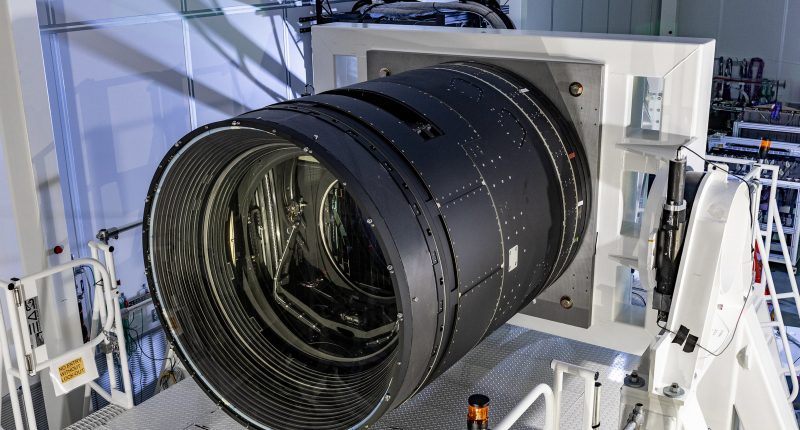THE largest digital camera ever built is finally ready – and it’s going to create a stunning map of the night sky.
Astronomers hope that over the next decade, the car-sized snapper will help reveal the mysteries of dark matter and dark energy.
Its official name is the Legacy Survey of Space and Time (LSST) Camera.
The 3,200-megapixel shooter sits at the heart of the Vera C. Rubin Observatory in Chile’s Elqui Province.
It weighs an incredible 6,600 lbs or 3,000 kilos with a front lens that measures more than five feet across.
Scientists from the Department of Energy’s SLAC National Accelerator Laboratory say it’s the largest lens ever made for this kind of astronomy.
The construction of the camera is now complete and is nearly ready to go online.
PICTURE PERFECT
“We will soon start producing the greatest movie of all time and the most informative map of the night sky ever assembled,” said Željko Ivezić, the Director of Rubin Observatory Construction and University of Washington professor.
The camera also contains another three-foot-wide lens, and features more than 200 custom sensors.
Importantly, the camera can capture an incredible amount of visual data – its resolution.
Most read in Science
Astronomers say it would take hundreds of 4K TVs just to display a single image from the camera at full size.
“Its images are so detailed that it could resolve a golf ball from around 15 miles away, while covering a swath of the sky seven times wider than the full moon,” said Aaron Roodman, a SLAC professor and deputy director at the Rubin Observatory.
“These images with billions of stars and galaxies will help unlock the secrets of the universe.”
The LSST camera has been built and tested, but it still needs to be packed and shipped to Chile.
Once it arrives, it will need to be driven up Cerro Pachón – an 8,900-foot mountain in the Andes.
It’ll then be hoisted atop the Simonyi Survey Telescope later in 2024.
STARRY EYED
The camera’s main job will be to map the locations – and measure the brightness of – a huge selection of objects in the night sky.
Scientists say it will be particularly looking for something called weak gravitational lensing.
That’s when giant galaxies (very slightly) bend the paths of light coming to us from background galaxies.
This can give astronomers clues about how mass is distributed in the universe, and how that’s changing over time to reveal more about the expansion of the universe – and its link to dark energy.
READ MORE SUN STORIES
It should also be able to create a much more detailed map of our own Milky Way galaxy.
And scientists hope that it will also be able to detect a huge number of previously-unknown smaller objects in our Solar System.
Dark matter: The invisible material that makes up 27% of the universe
Here are the key facts…
- Dark matter is a material that scientists believe makes up almost a third of the known universe.
- It has never been observed by scientists because it reflects no light, making it invisible.
- Astronomers only know it exists because of its effects on other objects, such as the gravitational pull of galaxies.
- According to the European Space Agency: ‘Shine a torch in a completely dark room, and you will see only what the torch illuminates.
- ‘That does not mean that the room around you does not exist.
- ‘Similarly we know dark matter exists but have never observed it directly.’
- Dark matter is thought to hold galaxies together, stopping the rapidly spinning objects from being torn apart by their own gravity.
- It is closely linked to dark energy, another hypothetical substance, which is thought to make up 68% of the known universe.
- Together, that means 95% of the universe is made up of dark energy or dark matter – meaning all but 5% of the cosmos cannot be explained by modern physics.















